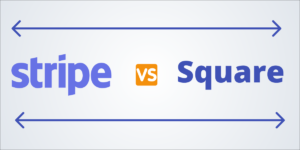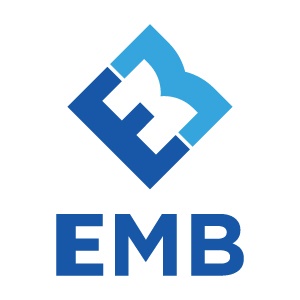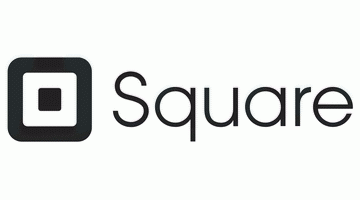Updated on November 22, 2021
With the growing number of e-commerce store owners worldwide, the need for better payment gateways is also increasing. While there are several competitors in the market, nothing beats the dominance of Stripe and Square.
Emerging as top players in the industry, Stripe and Square consist of various e-commerce tools and leading technology to ensure smooth payment collection. From email marketing to invoicing, there are limitless possibilities for providing online and in-person support.
However, drawing a comparison between both platforms is harder than it sounds. Even though their niche is slightly different, both platforms excel at making a retailer’s experience worthwhile. The major difference between both services is that Stripe came to the world of POS transactions later than Square.
To add more, Stripe focuses on mobile and e-commerce with tools designed for subscriptions-based businesses and different marketplaces. On the other hand, Square focuses on online and in-person payments along with CRM, inventory management, and more.
Choosing one out of the two requires a careful analysis of their features, e-commerce tools, and point of sale options. Therefore, we will start by briefly differentiating the two based on the types of customers they cater to and how they process payments.
What Is Stripe?
Founded in 2011, Stripe is allows you to accept both online and in-person credit card payments. It helps transfer money between a payment processor and your merchant account by using either an online processor or a manual credit card terminal.
It mostly caters to business applications and websites and has a well-developed design and code. Moreover, it has a cloud-based infrastructure made to provide security and reliability. The flexible nature of this gateway allows you to use it even when you need to send invoices out. Here are some pros and cons in a nutshell.
Pros
- Supports multiple currencies
- Top-notch subscription, reporting, and developer tools
- A great choice for international merchants
Cons
- Requires third-party software and technical skills for implementation
- May compromise on POS support
What Is Square?
Founded only two years before Stripe, Square is more of a virtual terminal for processing payments than a payment gateway. As opposed to Stripe, Square is not a standalone solution. It forms a part of a bigger e-commerce platform.
A notable feature of Square is that it turns your customer’s devices into POS (point-of-sale) terminals. It enables merchants to collect payments from customers by entering their credit card information manually or by reading them with a smart device. Here are some pros and cons in a nutshell.
Pros
- Economical chip readers
- Strong ecosystem
- First-rate set of features
- Easy to use
Cons
- Multiple currency support unavailable through a single account
- Costly for larger businesses
- Not ideal for international merchants
Pricing
Stripe
With this platform, there is no signup fee, making it a feasible option for maximum businesses. However, there are costs associated with different transactions, such as:
Basic: Charges 2.9% of the whole transaction plus $0.30.
International: Charges 3.9% for every transaction
Large: If the transaction is large, you can enjoy the perks 0.8% discounted rate per transaction.
Square
As a payment processor, Square also doesn’t charge any fee for signup. Additionally, it does not have any costs associated with business cards, refunds, authorization, and statements, etc. Here is a breakdown of the amount it charges for different types of transactions.
For the following services, you will be charged 2.9% plus a $0.30 transaction fee:
- Online APIs
- Square invoices
- Online stores
For the following services, you will be charged a 3.55 plus $0.15 transaction fee:
- Entering credit card info on a physical hardware
- Entering credit card info online
- API keyed-in transactions
- Card on file transactions
One of the best features of this payment processor is that there is no chargeback fee and a $250 chargeback protection on qualifying transactions.
Check out our Editor’s Picks for Payment Processors:
Retail, MOTO, and eCommerce
High Risk
Who Are The Target Customers?
Both Square and Stripe cater to smaller businesses that need platform-based solutions. However, their strategies are completely different. While Square targets transactions from brick and mortar businesses, Stripe targets e-commerce or online businesses.
Accepted Forms of Payments
Stripe
Businesses that use Stripe don’t have to go through the hassle of multiple merchant accounts. These are the types of payments you can accept with Stripe:
- Debit and credit cards
- Wire transfers
- International cards
- ACG direct credit and debit
Surprisingly, Stripe is also open to accepting Bitcoin, something other platforms hesitate to explore.
Square
As a payment gateway, Square has also expanded its horizons to accept different payment methods, both online and in-person. Here are all the payment forms it accepts:
- Credit cards such as Discover, Visa, American Express, and Mastercard
- Apple pay
- E-Wallet payments
- Android pay
One of the key features of this platform is that it accepts in-person mobile payments free of cost.
Customer Support
Customer support is undoubtedly the most important aspect of any service that provides a payment gateway or processing facility. Here are some crucial details pertaining to the customer service of both Stripe and Square.
Stripe
When it comes to customer service, Stripe has often been in deep waters. This is because, until 2018, Stripe customers could not access real-time support. However, later, it introduced phone support and live chat, making matters slightly better.
Square
On the other hand, Square offers live chat, support on email and phone, and support on Twitter. It also caters to people through its “Communities Forum,” where you can search for relevant keywords and questions.
All in all, both Square and Stripe are the best in the market when it comes to processing payments and acting as payment gateways. While Square is user-friendly and offers competitive pricing, Stripe has no monthly contracts and excellent customer service.
On the downside, both Square and Stripe are deemed unsuitable for high-risk businesses. Therefore, depending on the type of transaction and merchant, you can take your pick and use this article for further support.




